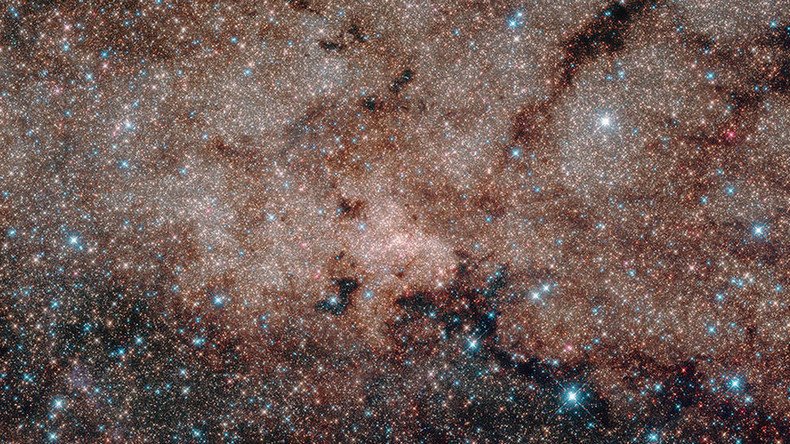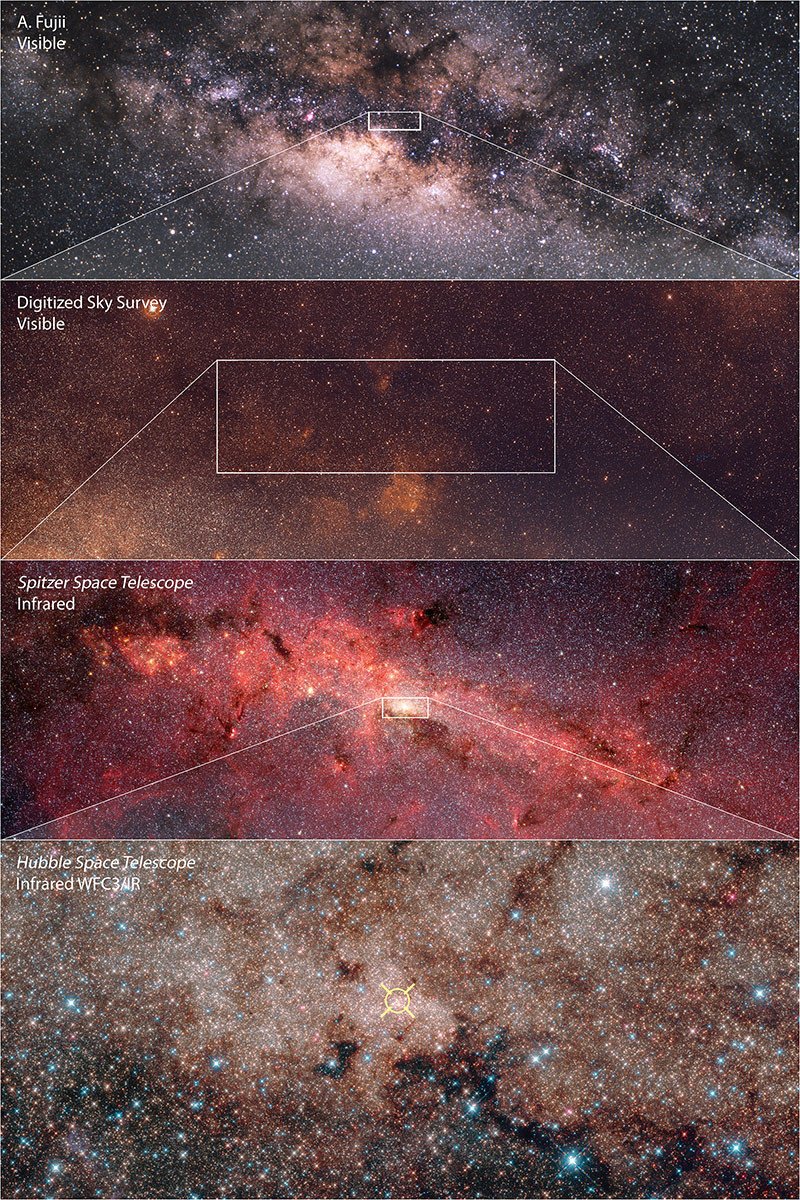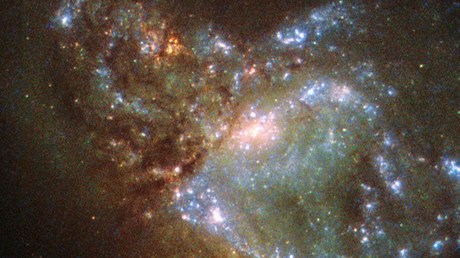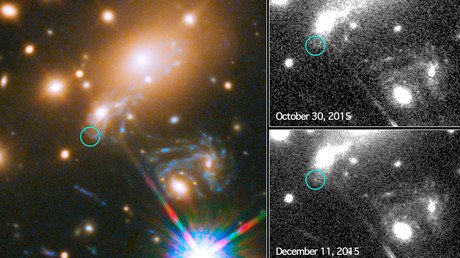Journey to the center of the galaxy: Hubble shows new views of Milky Way (PHOTOS)

NASA’s space telescope has reached the nougat at the center of our galaxy, producing some pretty impressive pictures of a star cloud swirling around the supermassive black hole at the heart of the Milky Way.
The latest picture of the galactic center reveals millions of stars in the nuclear cluster, the densest and most massive star cluster in the galaxy. The Hubble Space Telescope’s (HST) infrared vision was able to peer through the stardust obscuring the cluster, but even it could not penetrate the thick clouds of gas and dust inside the nougatty cluster itself.
Stitched from nine separate images from Hubble’s Wide Field Camera 3, the mosaic spans 50 light-years across, and shows the center of the Milky Way 27,000 light-years away. In addition to what NASA described as a “snowstorm” of stars in the image, astronomers estimate that about 10 million stars in the cluster are too faint to be captured in the image.

The cluster is so dense, astronomers say, it would be like having a million stars between our sun and its closest star neighbor, Alpha Centauri.
Hubble’s observations have allowed astronomers to measure the movements of the stars over a period of four years, and calculate the mass and structure of the nuclear star cluster. They hope further observation will help them determine how the nuclear cluster was formed. The two current theories are that globular clusters fell towards the galactic center, or that the galactic gas cloud spiraled out to form stars.
Launched in 1990, the space telescope is the joint project of NASA and the European Space Agency. It is managed by the NASA Goddard Space Flight Center in Greenbelt, Maryland.
The HST initially had a problem with its 7.9-foot (2.4-meter) mirror, which was corrected by a 1993 service mission. It was last serviced in 2009 by the Space Shuttle Atlantis, and is expected to stay operational until at least 2030.














